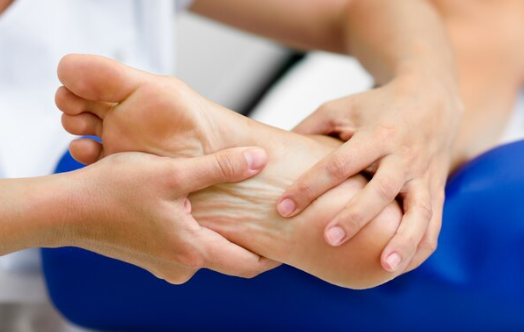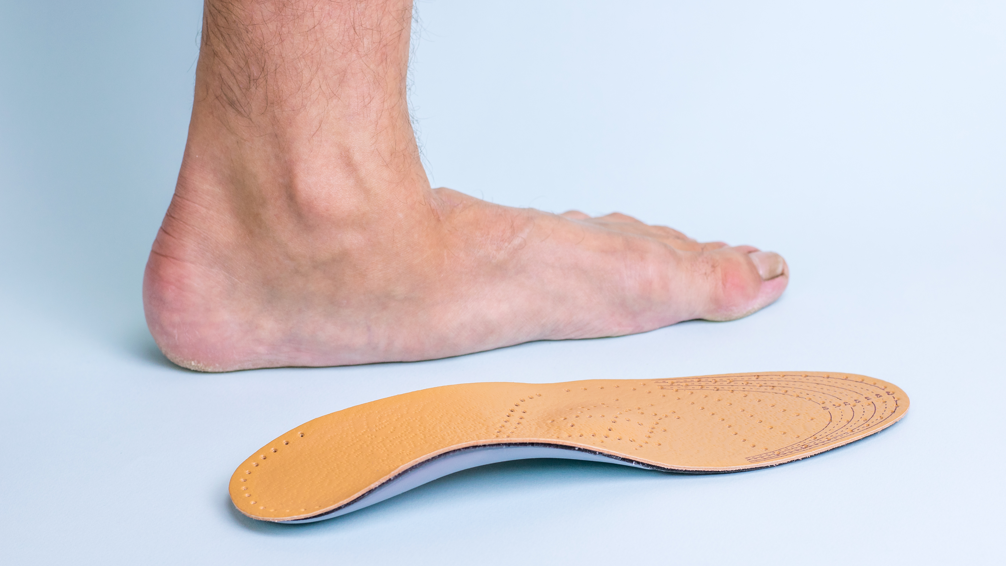Plantar fasciitis is one of the most common causes of heel pain. This condition is characterized by inflammation of the plantar fascia, the thick band of tissue that runs along the bottom of the foot. This tissue helps the foot absorb and disperse pressure and high impact forces through the foot. Preventing this condition will help you maintain a healthy foot and ensure you can continue living an active lifestyle. Below, we’ll explore various strategies to prevent plantar fasciitis in more detail.
1. Proper Footwear
Wearing the right shoes is fundamental in preventing heel pain especially if you are participating in more physically active activities. Footwear should have:
- Arch support: First, your shoes should provide adequate support for your arch of the foot. Particularly, this is important for individuals with flat feet or high arches
- Cushioning: Often, you should look for shoes with good cushioning to help absorb shock and reduce stress on the plantar fascia
- A good fit: For example, the width and length of the shoe should be appropriate for the shape of your foot. They should not be too tight or too loose so that your foot slides around inside, as both can lead to additional strain
Avoid flat shoes, flip-flops, or high heels, as these can exacerbate your foot problems and increase the risk of aggravation.
2. Foot Exercises
Incorporating specific exercises into your routine can enhance foot strength and flexibility, helping to prevent heel pain and plantar fasciitis:
- Stretching: Regularly stretch your calves, Achilles tendon, and plantar fascia. For example, calf stretches can be done in a lunge position, standing with your hands against a wall and pushing your back heel down
- Strengthening: Strengthening exercises, such as toe curls (picking up small objects with your toes), calf raises, or balancing on one foot can improve the stability and strength of your foot muscles
3. Gradual Increase in Activity
When engaging in physical activities, it’s best to increase intensity and duration gradually to avoid overtraining injuries. Sometimes, sudden increases in activity levels can place excessive strain on the plantar fascia. Follow these guidelines:
- Follow the 10% rule: As a general rule of thumb, when increasing mileage in running or walking, aim to increase by no more than 10% per week. This will help you to manage a safe increase in training load
- Cross-training: Engage in a variety of activities that to vary the impact on the feet. Particularly, activities like swimming or cycling still provide excellent cardiovascular benefits without the stress of running on the lower body
4. Maintaining a Healthy Weight
Excess body weight can put additional stress on your feet, particularly the plantar fascia as it now has to manage more load. Maintaining a healthy weight through a balanced diet and regular exercise can significantly reduce the risk of developing heel pain.
5. Use of Orthotics
Orthotic devices can provide additional support and correction for foot mechanics. If you have structural issues such as flat feet or high arches, consider the following:
- Custom orthotics: A podiatrist can create custom orthotics tailored to your foot’s specific needs. Here at PhysioNow, we are able to fit and order custom orthotics for our patients!
- Over-the-counter inserts: There are many supportive insoles available that can provide different levels of arch support and cushioning
6. Vary your Training Surface
Always walking or running on hard surfaces, such as concrete, greatly increases the impact on your feet. To minimize this:
- Choose softer surfaces: First, trail walking or running including grass and dirt trails are great alternatives. For both, opt for an indoor or outdoor track surface when exercising.
- Use mats or padding: If standing for long periods, consider using cushioned mats (anti-fatigue mats) in areas where you frequently stand, such as kitchens or workshops.
7. Taking breaks
For individuals whose jobs require long periods of standing or walking, it’s vital to take regular breaks to rest the feet:
- Scheduled breaks: Incorporate short breaks every hour to sit down or change positions and relieve pressure on your feet.
- Foot elevation: During breaks, you can try elevating your feet to reduce swelling and discomfort.
- Compression stockings: Some individuals find that compression socks/stocking help them remain comfortable all day, especially if they have to walk many steps
8. Warm-Up and Cool Down
Proper warm-up and cool-down routines are essential for any exercise regimen:
- Warm-up: Begin with gentle movements to increase blood flow to the feet and lower legs. Dynamic stretches can help prepare your muscles for activity.
- Cool down: After exercising, spend time stretching your feet, calves, and legs to maintain flexibility and reduce stiffness.
Ultimately, if these strategies do not work for you or you need help with your, look for PhysioNow! Physiotherapy offers effective treatment plans for the management of plantar fasciitis. Your Physiotherapist will develop a personalized plan to address the root cause of your foot pain. PhysioNow offers same day urgent assessment and treatment. With 10 locations from Burlington, Oakville, Mississagua and Etobicoke, book with PhysioNow today to start your new health journey!






Leave a Reply